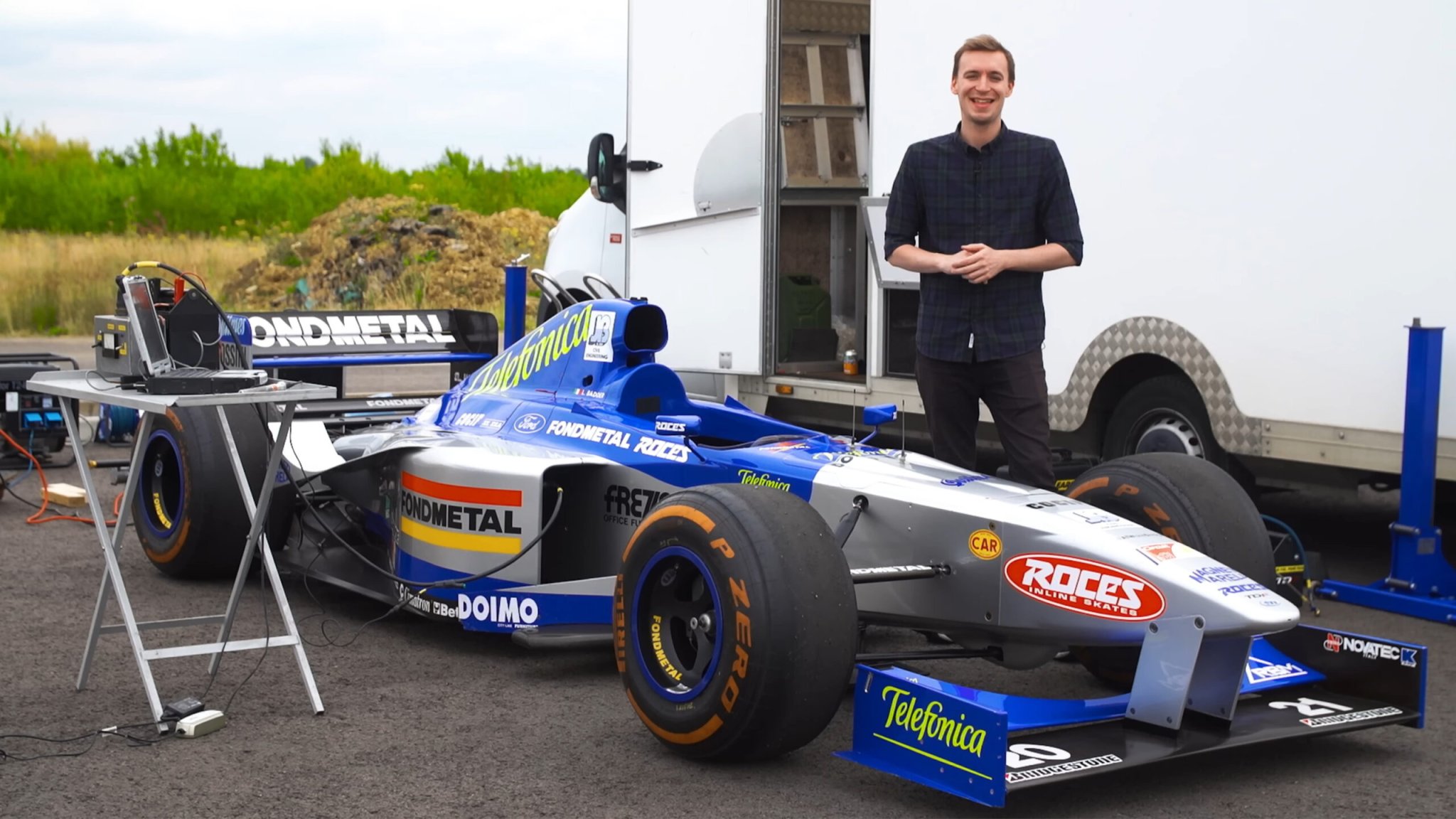

Starting a regular road car is as simple as getting in and pressing a button or turning a key. Starting a Formula 1 car is another thing entirely, with the process requiring serious equipment and hours of work. The latter is especially true if the F1 car is a vintage one.
YouTuber Matt Amys set out to demystify the process in a recent video, where he shares just what it takes to start up a 1998 Minardi F1 car. The video was shot in partnership with TDF, a British company that specializes in running vintage F1 cars on track. It’s not exactly the same as starting a modern F1 car of the turbo-hybrid era, of course. Nevertheless, it’s a great guide to the complex steps required to start a real race car.

According to James Densley, the chief technical director at TDF, it takes roughly one-and-a-half to two hours to start an F1 car. Much of that time is due to preheating, with that time depending on the car in question and the ambient conditions. The process takes longer on cooler days, due to the time required to get everything up to temperature.
“There’s this bit of a myth that [F1 engines] are seized when they’re cold,” says Densley. The myth is down to the extreme tolerances used in F1 racing engines, like the 15,000 rpm V10 in this Minardi. “They aren’t, but they do wear a lot more when they’re cold, so we preheat the systems… so when we start, we do less damage.” Coolant is heated externally and run through the radiator and cooling system to bring everything up to temperature. It’s crucial to ensure the coolant circulates through the entire system with no air pockets left behind. The engine can’t be started until it reaches at least 122 F, but the team normally prefers to start at a minimum of 140 F.



Amusingly, the team uses an ancient laptop running Windows 95 to talk to the car. This is because the software required won’t run properly on a modern laptop. The laptop displays all the vitals of the car, from coolant temperature to oil pressure. The team also hooks up a hydraulic power pack to the car prior to starting. This is to flush out any air from the hydraulic system and allow parts like the gearbox, throttles, and clutches to be tested with the engine off.
Other tasks include topping off the compressed air bottles that run the engine’s pneumatic valves. There’s also an external rig that gets hooked up to prime the car’s fuel pump, and an external battery that helps power the car’s systems before it’s started. When ready, the engine can be started via an external starter motor. The starter motor’s long shaft is inserted into the back of the gearbox to engage with a set of gears and turn the engine over.


Once running, mechanics check that everything is operating as it should be. The engine can be revved via a hand throttle, which allows the mechanics to check the engine without having to get in the cockpit. With the laptop hooked up to the racing ECU, everything from the throttle maps to the injector timings can be tweaked to tune the car for ultimate performance.
If all that sounds like a lot of work, it is. As demonstrated in the video, it takes a team of talented mechanics several hours to get the car off the trailer and up and running. That’s simply the price you pay for the extreme performance of a Formula 1 car, even one as comparatively slow as Minardi’s 1998 contender.
Got a tip? Let the author know: lewin@thedrive.com